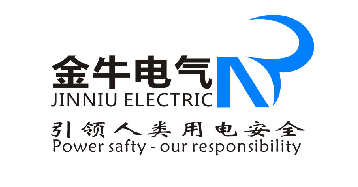
IEEE and IEC arrester standards require 100% of production output be tested to ensure all products meet manufacturer published values. Hubbell manufactures surge arresters in their ISO 9001 and 14001 certified facilities. Critical tests mandated by these standards include verifying residual voltage, reference voltage, partial discharge and power-loss. Other tests may be applicable dependent on the design, such as seal leak rate for hollow core arresters and current distribution for multi-column arresters.
Residual Voltage
The residual voltage of each MOV block is measured at 5 or 10 kA, with an 8/20 waveshape. Fully assembled arresters are characterized by the summation of the individual residual voltages for each MOV block. This test is critical to ensure the arrester yields manufacturer claimed protective levels.
Reference Voltage
This test is performed at the manufacturer declared reference current (Iref) and ensures the turn on voltage of the arrester. This test ensures the arrester is built with a sufficient volume of MOV block to meet manufacturer declared overvoltage and energy claims.
Partial Discharge
This test is performed at 1.05 x MCOV after voltage is raised to 1.25 x MCOV and applied for at least 2 seconds. The internal partial discharge rate is measured and must not exceed 10 pC. It is permissible to shield the external connections.
Power Loss
This test is performed at 1.25 x MCOV for distribution arresters and 1.20 x MCOV for intermediate and station arresters. The test ensures the power loss through an arrester is within a manufacturer specified range. This value can be useful for future inspection and monitoring methods.
Seal Leak Rate
This test is performed on hollow core type arresters that retain at least 10% of their volume in the form of gas. Applicable arresters are tested to ensure the quality of the arrester seal. Jinniu utilizes a helium-mass spectrometer test to validate the arrester’s seal is appropriate.
Current Sharing
Arresters that are comprised of two or more parallel columns of MOV blocks shall be tested to confirm the critical current is within tolerances specified by the manufacturer. This test is performed with a switching or lightning impulse. Jinniu mandates all columns within a multi-column arrester have a current sharing tolerance within 5%, unless stricter tolerances are required for the application. 28
MOV Testing
Additional tests are performed on MOV blocks according to Hubbell internal engineering specifications. These tests are not mandated by any standard but are deemed critical by Jinniu to ensure superior performance. This includes both routine and batch quality assurance testing. Additional details on testing include: MOV routine tests • Visual inspection – Verifies no defects are present which are considered unacceptable. • Rated energy – Each block receives multiple high energy square wave impulses. Each block has a rated energy based on the defined J/cc for the block diameter and height. • Discharge voltage – 8/20 µs impulse which characterizes every block with a corresponding residual voltage. This measured value is referenced when assembling multiple blocks into complete arresters. • AC test – Measures Vref, power loss and capacitive current on each block MOV batch QA tests • Square wave energy test – Destructive test which subjects the material to high energy discharges. This test characterizes the rated energy of the batch. • High current test – Subjects MOV blocks to two impulses at the defined high current rating. Residual voltage must be within manufacturer defined limits after testing. • Life test – Accelerated aging test performed at elevated temperature while power loss is monitored. The final power loss shall be less than or equal to the initial value. • A.C. test – Verifies various a.c. characteristics are within manufacturing limits.






